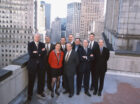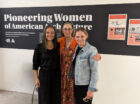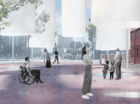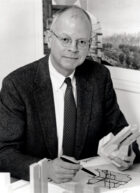Women have played a pivotal role in leading SOM’s projects and practice for several generations, starting in the 1950s. Their contributions are all the more notable in a profession that has continued to struggle with gender equity. Much progress has been made since our firm rose to prominence in the mid-century era, when design leaders such as Natalie de Blois never received the recognition they deserved. Today, women make up nearly half of our global staff, and three women partners lead our all-female executive committee. But more work remains to be done.
To learn about the challenges women in architecture have faced and how we can continue making progress toward gender equity, Marti Gottsch, chair of the SOM Women’s Initiative, brought together three remarkable leaders from our firm’s past and present: Diane Legge, who in 1982 was the first woman to become a partner; Marilyn Jordan Taylor, who in 1985 became lead partner for the urban design and transportation practices, as well as the firm’s chairperson in the early 2000s; and Julia Murphy, a current partner who continues to champion equity at SOM and throughout the profession.













